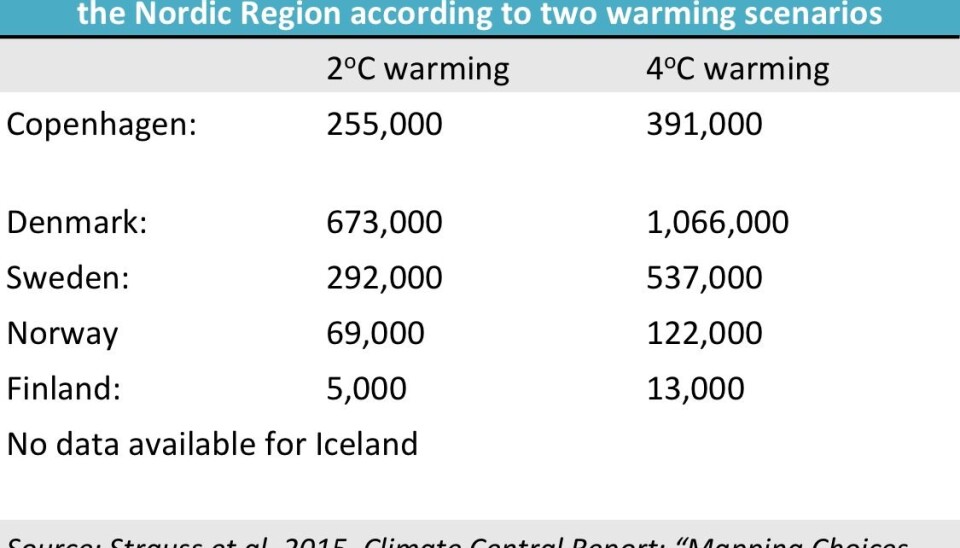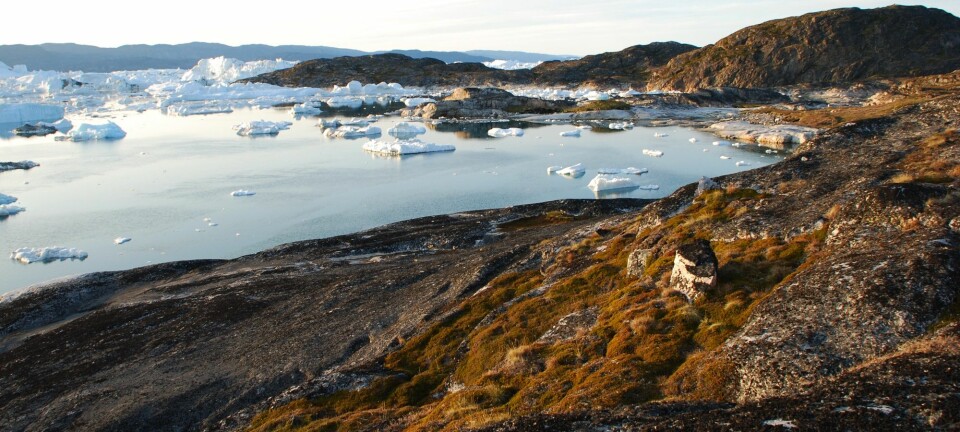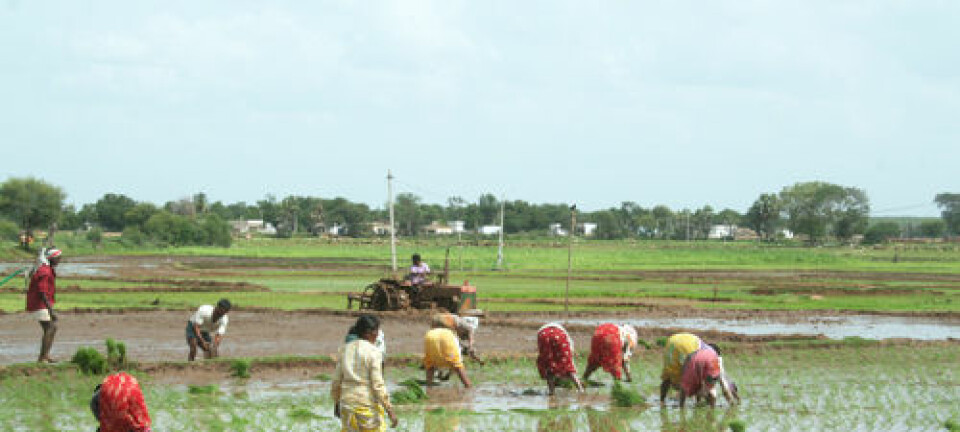
COP21: What does two degrees Celsius global warming look like?
Two degrees Celsius of global warming is the target for COP21 negotiations in Paris. But even this could lead to sea level rise as high as four metres.
The goal of the COP21 meeting in Paris is to limit global temperature rise to two degrees Celsius--the temperature threshold that should avert some of the most severe effects of climate change.
But what does this number really mean?
Already, global sea levels have risen 20 centimetres in the 20th century and this is predicted to continue, resulting in one metre rise by the end of this century.
Now, scientists from Climate Central, an independent research group of climate scientists in the US and the Potsdam Institute in Germany have presented what they describe as the choice facing us at the COP21 negotiations.
This choice, they say, is the sea level rise ‘locked in’ by the two warming scenarios: the target of two degrees Celsius vs. the sea level rise associated with unabated emissions and four degrees warming by the end of the century.
Carbon emissions causing four degrees Celsius of warming could lock in 8.9 metres of global sea level rise, which is enough to submerge the homes of 627 million people around the world, they write in PNAS.
“Carbon cuts resulting in the proposed international target of two degrees Celsius warming could reduce these numbers to […] 4.7 metres in sea level rise and 280 million people,” they write.
The results are published in the journal PNAS and in a follow up report at climatecentral.org.
Carbon in the atmosphere today ‘locks in’ future sea levels
How is sea level rise ‘locked in’? The answer relates to how long CO2 hangs around in the atmosphere after it was first emitted.
Even if we stopped all carbon emissions today, CO2 in the atmosphere will stick around for centuries.
As a result, the Earth will continue to warm, glaciers and ice-sheets will melt, and the ocean will expand as it becomes warmer.
Subsequently, sea levels will rise.
More than four metres of sea level rise in Copenhagen
If the Earth warms by just two degrees Celsius, the scientists predict it will lead to a sea level rise of 4.6 metres for Copenhagen.
According to 2010 population data, this would submerge the homes of 255,000 of the city’s inhabitants.
You can see how this might look in the video above.
Global warming of four degrees Celsius could, they say, lead to a sea level rise of 7.5 metres, submerging the homes of 391,000 residents.
Elsewhere in the Nordics the numbers are more modest. For example, in Finland this number drops to 5,000 people affected by long-term sea level rise.
Sea levels will rise, but how much, and when?
The outlook is dramatic, and as the video shows, many of Copenhagen’s famous buildings and tourist attractions would be swallowed by the rising ocean.
But is it realistic? And crucially, when could this happen? We spoke to three climate scientists to find out.
“If we assume an optimistic scenario for greenhouse gas emissions--the RCP 2.6 scenario, [see Fact Box] which would result in a warming of about two degrees Celsius--then we can expect an increase in sea level similar to what we see in this video,” says climate modeller Martin Stendel from the Danish Meteorological Institute, Copenhagen.
“It’s simple physics really, but this won’t happen until very far into the future--perhaps millennia--and nobody knows what else might happen within this time,” he says.
His colleague Jens Hesselbjerg Christensen, Adjunct Professor with the Niels Bohr Institute, University of Copenhagen, and the research leader for regional climate at the Danish Meteorological Institute, agrees.
“I wouldn’t rule it [4.6 metres of sea level rise] out, but we simply don’t know how long it could take, and what else might happen in the meantime,” says Christensen.“ You need to lose a lot of ice from some of the major ice sheets in Antarctica to achieve this kind of sea level rise, and we don't know when this could happen.”
Professor Robert Nichols, a coastal scientist from the University of Southampton in the UK, echoes this sentiment, and questions whether it is useful to think about changes that might not even happen for centuries yet to come.
“These sorts of changes are more likely to be played out over large timescales of hundreds or a couple of thousand years,” says Nicholls.
“But I think many people probably look as far into the future as the lives of their grandchildren, that takes us up to perhaps a little after 2100. This shorter timescale is perhaps more meaningful to people in terms of planning to cope and adapt to these changes,” he says.
On this timescale, only a modest rise in sea level--20 centimetres per century--is expected in the Nordic region, says Christensen.
Two degrees warming not a ‘magic number’
According to Stendel, the prospect of ‘locked in’ sea level rise does tell us one important thing:
“I think it’s an important point, that even two degrees Celsius warming is not ‘safe’ in the long run,” he says. “We can’t stop the sea from rising, but we can live with it if we take additional measures to adapt. And we have enough time for this,” he says, adding “However, for less optimistic scenarios [of greenhouse gas emissions], the anticipated sea level rise is larger, and we will have less time to adapt.”
Nicholls agrees.
“But it’s important to remember that we won’t sit there passively whilst the sea encroaches. We’ll defend coastal regions, and especially important cities, like Copenhagen,” he says.
Scientific links
- Carbon choices determine US cities committed to futures below sea level. Doi: 10.1073/pnas.1511186112
- Mapping Choices. Carbon, climate, and rising seas: Our global legacy.
- IPCC Climate Change 2013: The Physical Science Basis.








